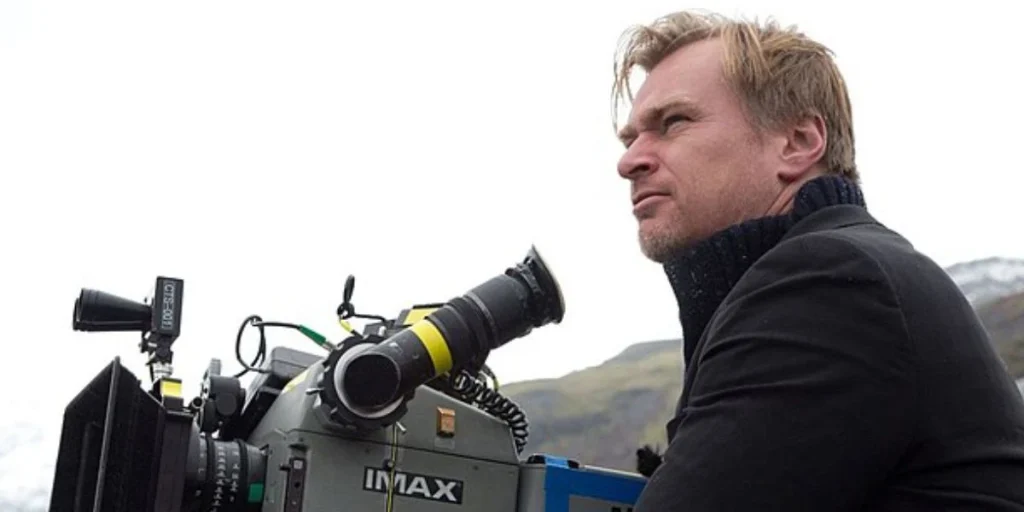Christopher Nolan always aims big, and his latest project is no exception. Renowned for his mind-bending stories and blockbuster success, Nolan is now bringing Greek mythology to life with The Odyssey.
You know, Homer’s ancient epic—the one that’s about gods, monsters, and Odysseus taking the scenic route home for a decade. Well, Nolan’s tackling it with a film that has a million-dollar price tag. It’s so massive, it makes Interstellar and Oppenheimer feel like indie flicks.
 Christopher Nolan (Credits: Image by HellaCinema, licensed under CC BY-SA 4.0, via Wikimedia Commons)
Christopher Nolan (Credits: Image by HellaCinema, licensed under CC BY-SA 4.0, via Wikimedia Commons)The Odyssey is a “mythic action epic” that’ll use groundbreaking IMAX film technology to bring Homer’s sweeping tale to life. If anyone can pull this off, it’s Nolan. But how does The Odyssey’s budget stack up against Nolan’s past films (Interstellar and Oppenheimer)? Let’s break it down!
What is the budget for The Odyssey?
Let’s not beat around the bush—$250 million is the budget for Christopher Nolan‘s upcoming The Odyssey. To put it into perspective, most Hollywood blockbusters don’t even come close. For Nolan, this budget matches his most expensive film, The Dark Knight Rises, and blows past others like Inception and Tenet.
 Robert Pattinson in Tenet (Credits: Warner Bros. Pictures)
Robert Pattinson in Tenet (Credits: Warner Bros. Pictures)Before Nolan’s take on The Odyssey, Hollywood has had a long, complicated relationship with Greek mythology. It all started in 1911 with The Fall of Troy, a silent short film inspired by Homer’s Iliad. Since then, filmmakers have tried—sometimes successfully, sometimes not—to capture the magic of these ancient tales.
In the mid-20th century, we saw classics like Helen of Troy (1956) and Jason and the Argonauts(1963). These films were ambitious for their time, blending groundbreaking effects with larger-than-life storytelling.
Fast forward a few decades, and Greek mythology made a comeback with movies like Troy (2004) and the Clash of the Titans remake in 2010. These films looked epic, but they struggled to capture the true greatness of Homer’s stories.
Nolan’s The Odyssey comes at a time when Hollywood is revisiting the “sword and sandals” genre. Ridley Scott’s Gladiator sequel, released in November 2024, is another example of this revival.
But what sets The Odyssey apart is Nolan’s track record. He’s never tackled Greek gods or myths before, but his films often explore themes like fate, time, and the human condition—concepts central to Homer’s works.
How does The Odyssey‘s budget compare to Interstellar and Oppenheimer?
To understand why The Odyssey’s budget is such a big deal, let’s look at two of Christopher Nolan’s most iconic films: Interstellar and Oppenheimer. Released in 2014, Interstellar came with a $165 million budget (via The Numbers).
 Matthew McConaughey in Interstellar (Credits: Filmcompagniet)
Matthew McConaughey in Interstellar (Credits: Filmcompagniet)It was an ambitious project, featuring stunning visuals of space and time-bending concepts that left us all stunned. But Nolan didn’t just rely on CGI. He built real sets, grew cornfields for that authentic feel, and used visual effects sparingly to keep things grounded.
Throw in an A-list cast like Matthew McConaughey and Anne Hathaway, and it’s no wonder the budget was sky-high. Then there’s Oppenheimer, which hit theaters in 2023 with a $100 million budget (per Variety). Nolan ditched CGI explosions, crafted 1940s sets, and gathered a dream team: Cillian Murphy, Emily Blunt, and Matt Damon.
 Cillian Murphy in Oppenheimer (Credits: Universal Pictures)
Cillian Murphy in Oppenheimer (Credits: Universal Pictures) Now, compare that to The Odyssey’s $250 million budget. Over double what Nolan spent on Oppenheimer and nearly $100 million more than Interstellar. It’s clear The Odyssey is going to be on a scale unlike anything Nolan’s tackled before.
Here’s why The Odyssey’s budget matters
So, why such a massive price tag for The Odyssey? Well, The Odyssey is no small feat. The story involves everything from shipwrecks and sea monsters to vengeful gods and epic battles.
Translating that kind of spectacle to the big screen isn’t cheap, especially when you’re using cutting-edge IMAX technology. Universal’s description of the film as a “mythic action epic” makes it clear that this isn’t just a retelling—it’s a reinvention.
Christopher Nolan’s next film ‘The Odyssey’ is a mythic action epic shot across the world using brand new IMAX film technology. The film brings Homer’s foundational saga to IMAX film screens for the first time and opens in theaters everywhere on July 17, 2026.
— Universal Pictures (@UniversalPics) December 23, 2024The budget also reflects the sheer scale of the production. Nolan isn’t one to rely heavily on CGI, so you can bet there will be enormous sets, elaborate costumes, and real-world locations that bring ancient Greece to life. Add to that to the cost of an A-list cast, a massive crew, and months of intensive filming, and you can see why $250 million feels justified.
If there’s one thing we’ve learned from Nolan, it’s to expect the unexpected. And with The Odyssey, he’s tackling a genre he’s never explored before. But that doesn’t mean the director is straying too far from his roots.
Nolan’s films have always been about exploring big ideas. From time warping in Inception to tough war choices in Dunkirk, his stories hit us right where it matters—universal themes we can all relate to.
 Fionn Whitehead in Dunkirk (Credits: Warner Bros. Pictures)
Fionn Whitehead in Dunkirk (Credits: Warner Bros. Pictures)The Odyssey is no different—resilience, fate, and that eternal battle between choice and destiny. Just with a little more ancient flair. Considering what Nolan has achieved with smaller budgets like Oppenheimer and Interstellar, the possibilities for The Odyssey are endless. Will it live up to the hype? If Nolan’s track record is anything to go by, the answer is a resounding yes.
Mark your calendars for July 17, 2026, to watch The Odyssey. Meanwhile, both Interstellar and Oppenheimer are available to watch on Amazon Prime Video!
.png)
 2 hours ago
9
2 hours ago
9


































 Bengali (BD) ·
Bengali (BD) ·  English (US) ·
English (US) ·